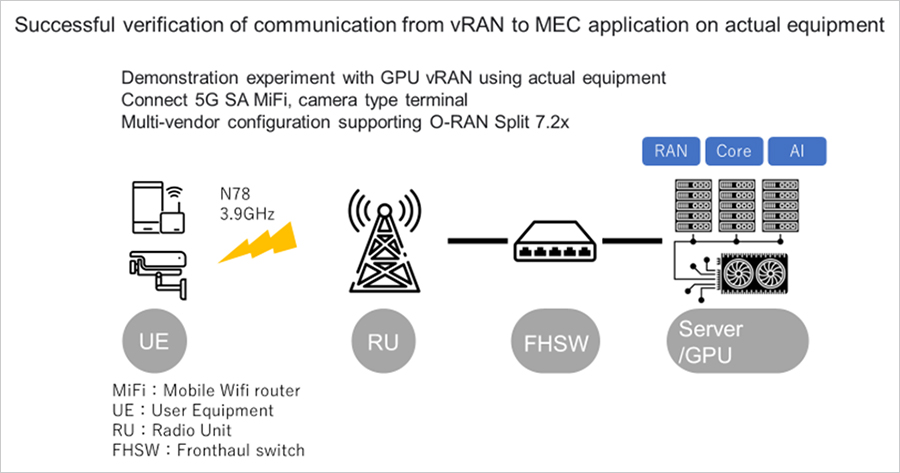SoftBank Corp. (“SoftBank”) announced, in collaboration with NVIDIA Corporation (“NVIDIA”) and Mavenir Systems, Inc. (“Mavenir”), it succeeded in End-to-End (E2E) communication from user equipment to image processing multi-access edge computing (MEC) applications via virtualized radio access network (vRAN) components using Graphic Processing Units (GPUs) in actual machines. The announcement follows SoftBank's opening of its research facility called “AI-on-5G Lab.” in 2022, where various solutions, including AI technology, can be demonstrated and applied to the business domain in an environment where vRAN and MEC are integrated. SoftBank, NVIDIA and Mavenir also achieved person detection using the AI real-time solution on a server that adopts the same architecture with vRAN.
“AI-on-5G Lab.” is a research facility built in collaboration with NVIDIA that consists of NVIDIA's hardware, vRAN and AI processing middleware, virtualized radio signal processing software from network software provider Mavenir, core network software, AI image processing application software on MEC, and physical Radio Units (RU) provided by Foxconn Technology Group. Distributed Units (DU) of the Radio Access Network (RAN) and MEC AI application work on the same architecture server. SoftBank successfully achieved real-time person detection by communicating wirelessly connected 5G-compatible camera images through its 5G network to an AI application.

SoftBank has been working on ways to share resources with several applications using GPUs, even though many vRAN accelerators are specialized for vRAN software. This achievement proves GPU are usable with both RAN and AI applications. In the future, SoftBank will utilize the GPU platform for AI application as a vRAN platform when adding RU and vRAN software, and enable the vRAN site as a MEC location that uses GPUs.
SoftBank plans to realize dynamic resource allocation depending on RAN and MEC demand, and lower power consumption of vRAN in the future.
Email Newsletters
Sign up to receive TelecomTV's top news and videos, plus exclusive subscriber-only content direct to your inbox.



